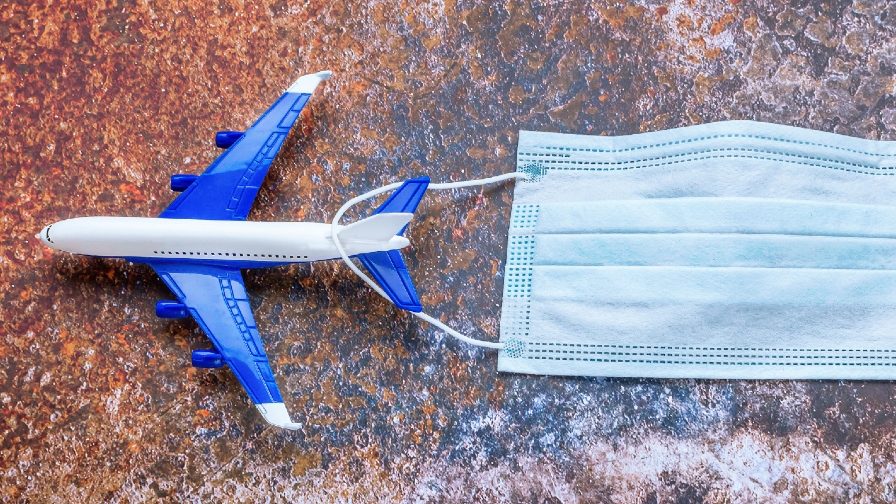
Pandemic, Panic and Profit: COVID-19 Is a Sink or Swim Moment for Industries
By Alexander Gelfand
As executive director of the Armstrong Center for Alumni Career Services at the University of Virginia Darden School of Business, Jen Coleman has grown accustomed to fielding a steady stream of calls from alumni seeking to forge new career paths. So it was a little eerie when that stream suddenly dried up this past spring as the coronavirus pandemic took hold.
“We were dead quiet from March to July,” Coleman recalls. “It was clear that everyone was sheltering in place professionally.”
As restrictions began to ease, the situation gradually reversed itself. By September, Coleman and her colleagues were seeing a near-record surge of inquiries thanks to “a ton of pent-up demand for career motion.”
That demand raises a pressing question: When the global economy emerges from the shadow of COVID-19, which businesses will be poised to thrive, and which doomed to struggle?
Reading the Tea Leaves
Predicting the future is especially difficult when so much about the pandemic, from its duration to its long-term economic impact, remains unknown. Nonetheless, there are hints of what may be coming.
Surveys of business leaders around the world conducted this fall by Kyle Hawke (MBA ’11), a partner at McKinsey & Co., indicate that more than half of respondents don’t expect the global economy to fully recover until sometime between the third quarters of 2022 and 2023, with global GDP in 2021 taking roughly a 9 percent hit — the single largest setback since World War II.
Recoveries have been highly uneven. In May, Hawke says, almost every major industry showed negative average weighted market capitalization over the previous year. By August, however, market caps for industries such as tech and pharma had risen by 38 percent and 10 percent, respectively, while travel, commercial aerospace, and oil and gas were down by 19 to 28 percent.
Those numbers jive with what Coleman and Michele Rankin, a senior director at the Darden Career Center, have been hearing. Darden alumni report layoffs and furloughs in areas such as hospitality and transportation.
“This is not the time to be looking for a role at an airline,” Rankin says, but there is lots of action in tech and health care.
Professor Doug Thomas adds that the pandemic has vastly accelerated a number of tech-enabled trends that were already gaining traction. These include warehouse automation; the shift from in-person to online shopping; and the rise of telehealth, distance learning and remote work. As a result, says Thomas, “companies that have been continuing to push on the tech side will come out ahead.”
Rankin’s contacts suggest that consulting firms and investment banks anticipate early post-pandemic upticks as businesses seek outside help to rethink their operations and seize the opportunity to acquire companies that can no longer survive on their own.
How to Succeed in the Post-Pandemic World
Beyond industry-specific headwinds and tailwinds, there is also the matter of what business leaders can do to ensure their organizations are well-positioned to succeed in a post-pandemic world.
Hawke, for example, contends that “every company has the opportunity to outperform their peers in the long run.” Whether or not they do so depends largely on the moves they make right now, such as allocating resources where they should be rather than where they have traditionally been and differentiating products and services to command higher price points.
What’s more, says Hawke, business leaders will need to overcome the natural human biases that can interfere with the kind of high-stakes, big-bet decisions they will be called upon to make as the economy improves. He suggests challenging the assumptions that lie behind every recommendation and introducing “an appropriate level of challenge” to the decision-making process. For example, teams could be required to present competing evaluations of different options.
What leaders cannot do, Hawke says, is treat the pandemic like a normal business disruption. “You cannot manage this purely as a crisis, because this won’t go away like a normal crisis. You need a new operating model,” he says.
Supply Chain Makeover
Businesses that want to succeed in a post-COVID landscape will have to reimagine their supply chains.
Given how much consumer habits have changed in recent months, says Professor Vidya Mani, consumer-facing industries from apparel to education to health care will need to do more than tweak their existing networks.
“What we want, what we do, how we work has changed for the foreseeable future,” says Mani. “The old supply chain won’t work.”
And everyone is going to have to pay more attention to resilience. Snarled supply chains were a hallmark of the early stages of the pandemic, when countries around the world went into lockdown and logistics came to a standstill just as demand for items such as personal protective equipment, toilet paper and hand sanitizer was surging.
To some extent, says Professor Elliott Weiss, the ensuing product shortages were inevitable. “You can’t plan inventory for events like this,” says Weiss.
But in a sense, those worldwide disruptions were also the natural consequence of fine-tuning supply chains for cost and efficiency first and only later laying contingency plans.
“Every company has a resiliency plan. But those things tend to be done after we optimize the supply chain,” Thomas explains.
Businesses that do their disaster planning up front will, therefore, be in a better position moving forward. Thomas adds that industries with high profit margins, like luxury goods, may have an easier time than low-margin and price-sensitive ones, like consumer goods, that have successfully driven down costs through lean operational efficiency approaches.
According to Mani, organizations whose chains adhere to socially and environmentally responsible practices such as providing a living wage to workers and minimizing waste will also be better equipped to weather future storms.
Thus far, much of the push toward sustainability has been driven by consumer concern over climate change. But sustainable supply chains don’t just help mitigate global warming; they provide insurance against disruptions of all kinds.
“A fairer, more just supply chain is also more resilient,” Mani says. “It’s not just about building buffers in goods but building resilience in the people and the structures that surround the chain.”
Be Nimble, Be Quick
Perhaps the greatest guarantor of success in this brave new world, however, will be the ability to adapt and respond quickly in the face of continued uncertainty.
Weiss points to the way in which the paper products industry responded to the run on toilet paper that occurred in the spring. By quickly pruning variety from their product lines, manufacturers were able to reduce the downtime that accumulates when switching from the production of one kind of paper to another, effectively increasing their overall capacity. Similarly, companies engaged in developing vaccines against the novel coronavirus built inventories of individuals available to participate in clinical trials so that they were able to hit the ground running when their products were ready to be tested.
That kind of foresight and flexibility are going to be crucial in the months and years ahead.
As Hawke notes, the outlook for both the economy and public health “is still quite murky,” and the range of possible outcomes is large. Business leaders, therefore, need to be prepared to pivot rapidly, making decisions and reallocating resources based on leading indicators hat make sense for their industries and their company-specific planning scenarios.
Thomas agrees.
“Companies that have agility in their DNA, that are used to adapting quickly to new environments, and that are really good at leveraging the data they have, even without all the answers, are going to come out of this well,” he says.
The University of Virginia Darden School of Business prepares responsible global leaders through unparalleled transformational learning experiences. Darden’s graduate degree programs (MBA, MSBA and Ph.D.) and Executive Education & Lifelong Learning programs offered by the Darden School Foundation set the stage for a lifetime of career advancement and impact. Darden’s top-ranked faculty, renowned for teaching excellence, inspires and shapes modern business leadership worldwide through research, thought leadership and business publishing. Darden has Grounds in Charlottesville, Virginia, and the Washington, D.C., area and a global community that includes 18,000 alumni in 90 countries. Darden was established in 1955 at the University of Virginia, a top public university founded by Thomas Jefferson in 1819 in Charlottesville, Virginia.
Press Contact
Molly Mitchell
Associate Director of Content Marketing and Social Media
Darden School of Business
University of Virginia
MitchellM@darden.virginia.edu







